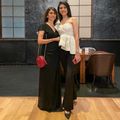Interviews
BioFach 2012: Eco friendly fashion still on the up
26 Sep '11
5 min read
Insiders are agreed: The future belongs to clothing that is kind to both the environment and people, and labels with high standards in both respects. Like the Global Organic Textile Standard (GOTS), for example. Almost 3,000 companies have already been certified to this label in the meantime. Many companies also strive for IVN Best certification, the top standard of the Internationaler Verband der Naturtextilwirtschaft e. V. (IVN – International Association of the Natural Textile Industry). This association has also developed a very stringent standard for leather, which the first companies will meet in 2012. Leather is ecologically problematic for various reasons, but particularly due to the use of the heavy metal chromium for tanning.
India is the world's most important source country for organic cotton
Which fibres will be the future hits in the eco-textile market has already been discussed at BioFach's Textile Forum at the beginning of 2011. Although organic cotton is very successful, the explosive growth of the initial period is history. 210,000 tons of the non-toxic plants were harvested in 2010/2011 – this corresponds to one per cent of the total cotton market. The bulk of the world's organic cotton comes from India, the Country of the Year at BioFach 2012. But other natural fibres can also be proud of their good life cycle assessment. Designers and material manufacturers are constantly searching for innovative alternatives.
These include vegetable fibres like hemp, linen and untreated cotton, but also animal fibres like virgin wool, silk and fine quality hair, which is also available in organic quality. According to experts, however, the traditional knowledge of how to process these fibres has been partly lost, and there are problems with the certification of small farms and wild animals. Nevertheless, many natural textile manufacturers prefer these fibres to viscose materials (semi-synthetics) like Tencel or recycled polyester fibres, which mainly attract the big brand manufacturers, who produce sports or outdoor clothing. “In principle, tomorrow's wardrobe will certainly include a whole range of fibres. Intensive efforts are also being made to find more ecological washes for jeans or more environment-friendly dyes and printing,” says Dr. Kirsten Brodde. So the situation remains interesting.
Another indication of the growing market is certainly unusual: environmental protection organizations, consumer centres and product testers are checking more frequently to see whether eco-fashion lives up to its promise. Brodde: “Transparency is top priority, keeping quiet in the showroom is out. The eco-fashion sector is well equipped in this respect, however, as it has always been part of its self-image to provide information on how and where the products are produced.”
India is the world's most important source country for organic cotton
Which fibres will be the future hits in the eco-textile market has already been discussed at BioFach's Textile Forum at the beginning of 2011. Although organic cotton is very successful, the explosive growth of the initial period is history. 210,000 tons of the non-toxic plants were harvested in 2010/2011 – this corresponds to one per cent of the total cotton market. The bulk of the world's organic cotton comes from India, the Country of the Year at BioFach 2012. But other natural fibres can also be proud of their good life cycle assessment. Designers and material manufacturers are constantly searching for innovative alternatives.
These include vegetable fibres like hemp, linen and untreated cotton, but also animal fibres like virgin wool, silk and fine quality hair, which is also available in organic quality. According to experts, however, the traditional knowledge of how to process these fibres has been partly lost, and there are problems with the certification of small farms and wild animals. Nevertheless, many natural textile manufacturers prefer these fibres to viscose materials (semi-synthetics) like Tencel or recycled polyester fibres, which mainly attract the big brand manufacturers, who produce sports or outdoor clothing. “In principle, tomorrow's wardrobe will certainly include a whole range of fibres. Intensive efforts are also being made to find more ecological washes for jeans or more environment-friendly dyes and printing,” says Dr. Kirsten Brodde. So the situation remains interesting.
Another indication of the growing market is certainly unusual: environmental protection organizations, consumer centres and product testers are checking more frequently to see whether eco-fashion lives up to its promise. Brodde: “Transparency is top priority, keeping quiet in the showroom is out. The eco-fashion sector is well equipped in this respect, however, as it has always been part of its self-image to provide information on how and where the products are produced.”
BioFach 2012
Popular News
Leave your Comments
Editor’s Pick
Christian Guinet
French Textile Equipment Manufacturers’ Association (UCMTF)
Salvatore Piccione
Label - Salvatore Piccione
































-Ltd..jpg?tr=w-120,h-60,c-at_max,cm-pad_resize,bg-ffffff)





.jpg?tr=w-120,h-60,c-at_max,cm-pad_resize,bg-ffffff)
.jpg?tr=w-120,h-60,c-at_max,cm-pad_resize,bg-ffffff)






